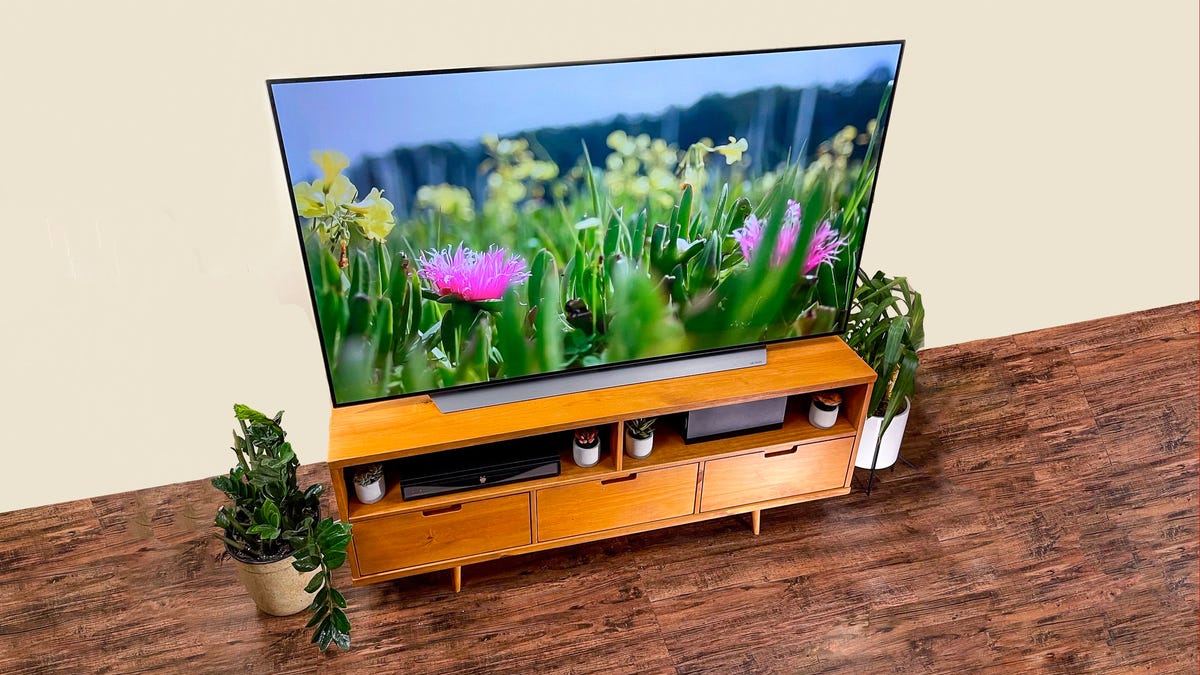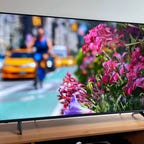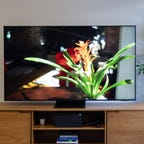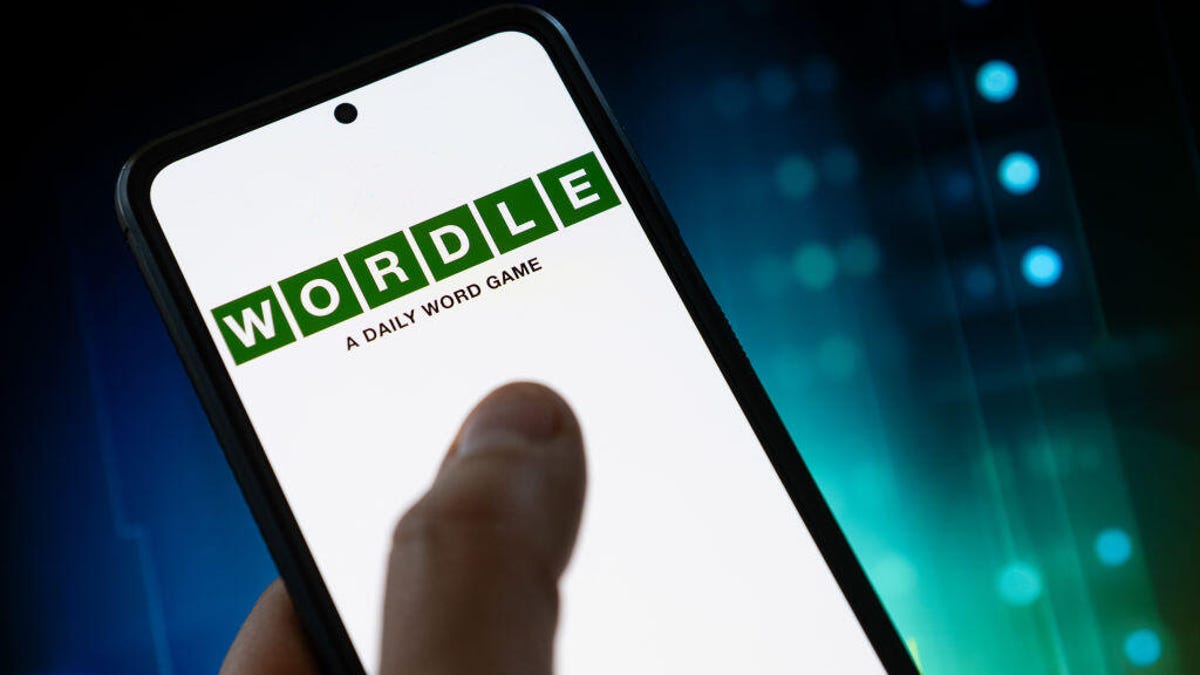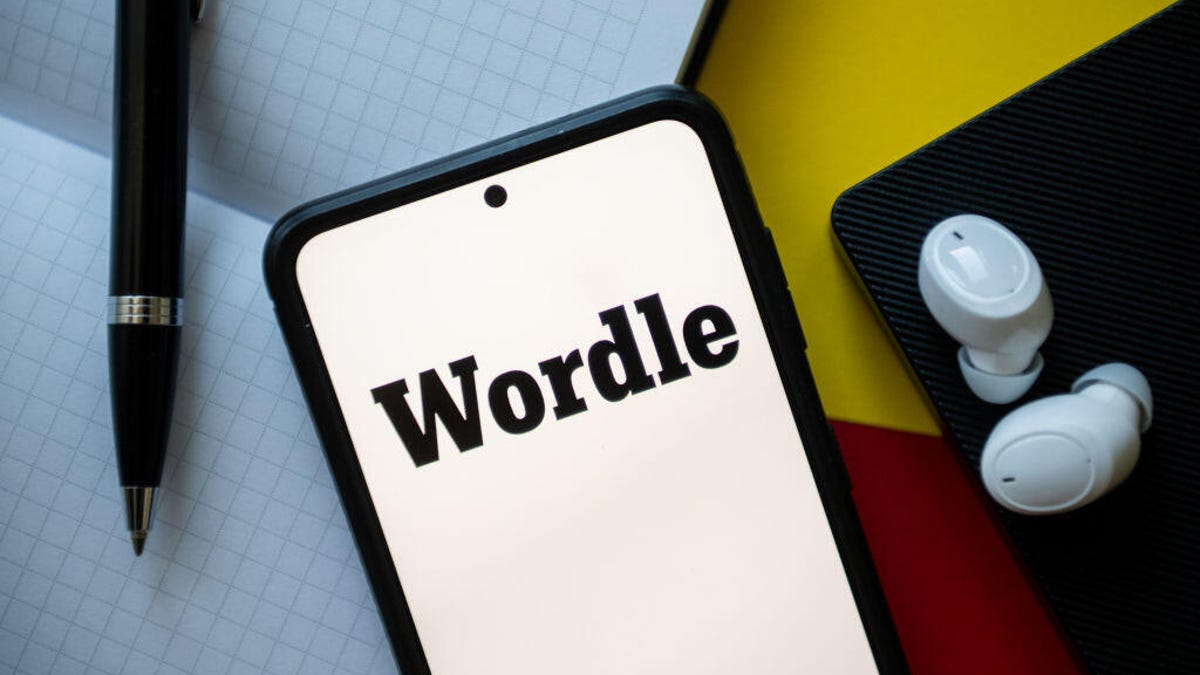It’s not easy to choose the right TV. Getting the size right is crucial. Ideally, you want a screen that is big enough that you can see it clearly, but not so big that you’ll have to stretch your neck to watch it. A 55-inch TV is a sweet spot for smaller rooms.
A 55-inch television is a mainstream choice: You can get pretty much any TV feature you’d want in this size. They come loaded with smart TV features, which include the ability to stream your favorite shows and films on Amazon Prime Video, Hulu, Netflix, Disney Plus, and more. If you’re looking for more advanced features, you can get those too, including full-array local dimming, OLED screens, 120Hz refresh rate, 4K UHD resolution, high dynamic range and a bunch of HDMI ports.
As such, to help you pick the best one for you, we’ve put together the best 55-inch TVs of 2024 below. Now is a great time to get 2023 TVs on sale as their 2024 counterparts hit the shelves last month.
At CNET, I review TVs side by side in a state-of-the-art testing lab, taking hundreds of measurements with specialized equipment, comparing gaming, home theater and bright-room image quality. My 20 years experience as a TV reviewer helps me determine not just the best 55-inch TV overall but also the best 55-inch TV in your price range.
What is the best 55-inch TV right now?
The Hisense U8 Series appears on our list of best TVs for a number of reasons. It offers superb picture quality and an affordable price, plus gaming features like 4K/120Hz input and variable refresh rate that can get the most out of consoles like the PS5 and Xbox Series X. When friends ask me what TV to buy at 55 inches, and money is still an object, I tell them to get the Hisense U8K.
There are plenty of other excellent choices out there, however, so even though the Hisense U8K is my current favorite for most people, it might not be right for your preferences or budget.
Read more: Do This to Your TV Now: 9 Crucial Settings to Improve the Picture
Best 55-inch TVs in 2024
If you’re looking for the best TV for the money and the TCL QM8 is just too big, the Hisense U8K should be your go-to. I compared the two TVs side-by-side, and while I liked the QM8 just a bit better, the U8K has one medium-size advantage: a 55-inch screen option. If 65 is too large for your room, your budget or your tastes, the choice between the two is simple: Get the 55-inch Hisense UK8.
Both offer excellent image quality and affordable prices thanks to mini-LED backlights and full-array local dimming, as well as similar gaming features and the Google TV operating system. Both cost hundreds less than you’d have to pay to get similar image quality from a better-known brand.
Note that while I tested the 65-inch size in the U8K series, the prices shown here are for the 55-inch size.
The C3 represents better picture quality than any non-OLED TV on this list at a higher price but is still not outrageously expensive. Its perfect black levels, unbeatable contrast and superb off-angle viewing kept it a notch above the mini-LED models in my comparison tests, and while its overall brightness isn’t quite as impressive, it’s still an incredible performer in all kinds of room lighting.
When we compared the best budget TVs side-by-side, the picture quality of Vizio’s V-Series clearly emerged as the leader of the pack. The Vizio offered the most balanced and accurate picture during our comparisons, and it comes with some useful extras such as Dolby Vision support, Wi-Fi 6E, Bluetooth compatibility and variable refresh rate for potentially smoother gaming. The biggest downside of the Vizio is its smart TV platform, Vizio SmartCast. It’s crowded, slow and littered with ads for platforms such as Tubi and Kidoodle TV. Even when you factor in the cost of adding a new streaming device, however, the V-Series remains the best overall entry-level TV that we tested.
Vizio didn’t launch a 2023 version of the V-Series, but we may see a refresh in 2024.
Looking for a high-end TV with spectacular image quality, but don’t want an OLED? The Samsung QN90B is your best bet. This TV uses QLED TV tech augmented by mini-LED for a brighter image than any OLED TV. The spectacular contrast of OLED still won out in our side-by-side tests, but the QN90B QLED screen comes closer than ever.
Samsung produces a number of QLED TVs, but the QN90B is among the highest-end, aside from versions with 8K resolution. This is a 2022 model, but the 2023 version, the QN90C, looks very similar in terms of features and while we haven’t reviewed it, we expect it to deliver similar image quality. It’s also significantly more expensive.
The picture quality of the TCL 4-Series Roku TV was a step behind the Vizio V-Series (see below) in our budget TV test, but the differences between the two are slight enough that you’d really have to have them set up side by side to notice anything at all. The 4-Series lacks the Dolby Vision, Bluetooth connectivity and AMD FreeSync with a variable refresh rate, all of which the Vizio offers.
The 4-Series’ advantage over the Vizio is that it comes with the excellent Roku Smart TV system built in. That makes it a great choice for those looking for a one-stop smart TV solution, without having to add an external streaming device.
Note that TCL has been selling the 4-Series for the last few years with little to no change in image quality or features in our tests, although it has recently added some larger screen sizes, including an 85-inch option.
Samsung is the brand that sells more TVs than anyone, and one of its most popular is the Q60 series. Its sleek QLED screen design stands out compared with the other TVs on this list — even though the ultrathin OLED models are sleeker — and it offers better features, image quality and more sizes than models like the TCL 4-Series and Sony X80K. The TVs listed in this article are all superior values, but if you want a Samsung TV and can’t afford the QN90B, this is a great choice.
This is a 2022 model, but the 2023 version, the Q60C, looks largely similar in terms of features, design and price. We haven’t reviewed it yet, but we expect it to have similar image quality.
Competition among TVs in the middle pricing band is heating up and the Plus Series is the latest entrant, which came out in 2023. It adds a couple of step-up extras, including QLED and full-array local dimming, which help deliver a better picture than the TCL 4-Series, for example. It’s not as impressive as the Vizio MQX, though, since it lacks 120Hz for gaming and has worse picture quality overall. If you value those extras, the Vizio is worth saving for, but if not the Roku Plus Series is a very good value.
This is the first TV Roku has produced under its own brand, as opposed to partnering with a brand like TCL, Sharp, Pioneer or Hisense. The company also released a version with fewer features and no local dimming, called the Roku Select Series.
Our TV reviews follow a rigorous, unbiased evaluation process honed over nearly two decades of TV reviews. Our primary TV test lab has specialized equipment for measuring light and color, including a Konica Minolta CS-2000 spectroradiometer, a Murideo Sig-G 4K HDR signal generator and an AVPro Connect 8×8 4K HDR distribution matrix. We use Portrait Displays CalMan Ultimate software to evaluate each TV we review. In every CNET TV review, three or more similar TVs are compared side by side in various lighting conditions playing different media, including movies, TV shows and games, across a variety of test categories, from color to video processing to gaming to HDR. Our reviews also account for design; features; smart TV performance; HDMI input and gaming compatibility; and other factors.
One important aspect of image quality we test is overall brightness. Here’s how it compares in nits across select TVs listed above.
Light Output in Nits
undefined
| TV | Brightest mode (HDR) | Accurate mode (HDR) | Brightest mode (SDR) | Accurate mode (SDR) |
|---|---|---|---|---|
| Samsung QN65Q90B | 3,316 | 1,981 | 2,625 | 974 |
| Hisense U8H | 1,867 | 1,867 | 1,605 | 1,605 |
| TCL 65R655 | 1,387 | 1,194 | 1,292 | 624 |
| Vizio M65QXM-K03 | 939 | 742 | 958 | 608 |
| LG OLED65C2 | 812 | 759 | 413 | 389 |
| Roku TV Plus (65-inch) | 514 | 455 | 579 | 404 |
Check out How We Test TVs for more details.
With all the TVs available today, and all the technical terms and jargon associated with television technology, it can be tough to figure out what’s important. Here’s a quick guide to help you cut through the confusion.
Price: TVs range in price from $100 to more than $2,000. Smaller screens are cheaper, well-known brands are more expensive and spending more money can also get you better image quality. Most entry-level TVs have a good enough picture for most people, but TVs last a long time, so it might be worth spending more to get a better picture. It’s also best to shop for a TV in the fall, when prices are lower.
Screen size: Bigger is better in our book. We recommend a size of at least 43 inches for a bedroom TV and at least 55 inches for a living room or main TV — and 65 inches or larger is best. More than any other “feature,” stepping up in TV screen size is the best use of your money. One of the most common post-TV-purchase complaints we’ve heard is from people who didn’t go big enough. And we almost never hear people complain that their TV is too large.
Capability: Among entry-level TVs the most important feature is what kind of smart TV system the TV uses. Among midrange models, look for a feature including full-array local dimming, mini-LED and 120Hz refresh rate, which (unlike some other extras) do help improve the picture, in our experience. And among high-end TVs, OLED technology is your best bet.
For more TV buying advice check out How to Buy a TV.
Is a 55-inch TV big enough?
How wide is a 55-inch TV?
How much does a 55-inch TV weigh?
#55Inch #TVs #Hisense #Samsung


